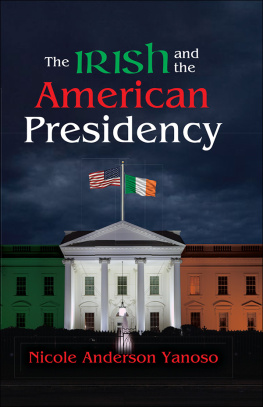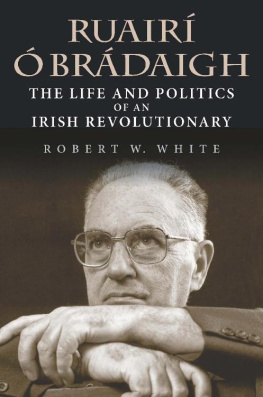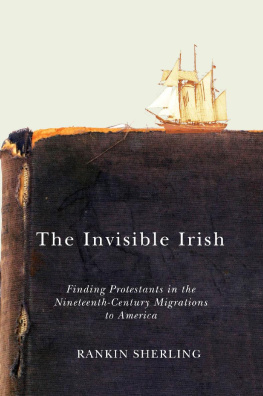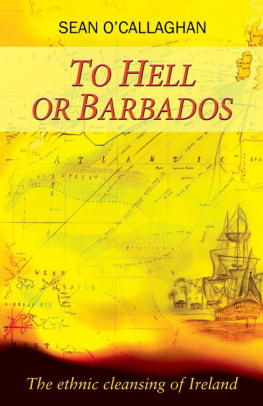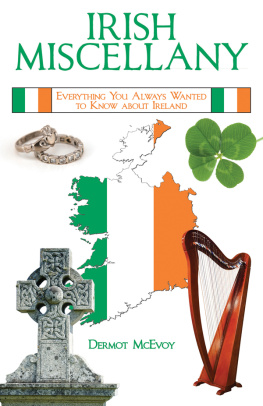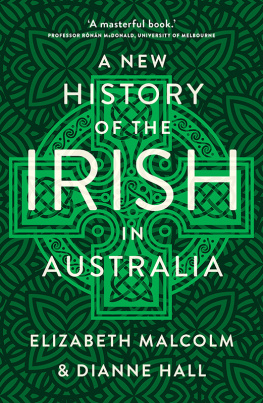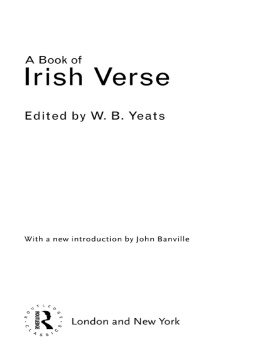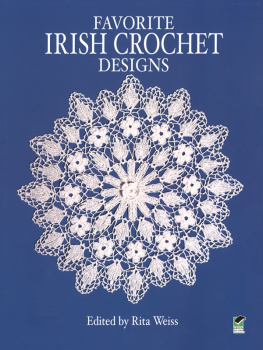How the Irish Became White
from time to time a study comes along that truly can be called path breaking, seminal, essential, a must read. How the Irish Became White is such a study.
John Bracey, W.E.B. Du Bois Department of Afro-American Studies, University of Massachusetts, Amherst
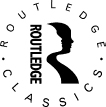
Routledge Classics contains the very best of Routledge publishing over the past century or so, books that have, by popular consent, become established as classics in their field. Drawing on a fantastic heritage of innovative writing published by Routledge and its associated imprints, this series makes available in attractive, affordable form some of the most important works of modern times.
For a complete list of titles visit
www.routledge.com/classics
Noel
Ignatiev
How the Irish Became White

This edition first published 1995
by Routledge
First published in Routledge Classics 2009
by Routledge
Milton Park, UK and Madison Ave., US
Simultaneously published in the UK
by Routledge
2 Park Square, Milton Park, Abingdon, Oxon OX14 4RN
Reprinted 2009
Routledge is an imprint of the Taylor & Francis Group, an informa business
1995, 2009 Noel Ignatiev
Typeset in Joanna by RefineCatch Limited, Bungay, Suffolk
All rights reserved. No part of this book may be reprinted or reproduced or utilized in any form or by any electronic, mechanical, or other means, now known or hereafter invented, including photocopying and recording, or in any information storage or retrieval system, without permission in writing from the publishers.
Library of Congress Cataloging in Publication Data
A catalog record for this book has been requested
British Library Cataloguing in Publication Data
A catalogue record for this book is available from the British Library
ISBN10: 0415963095
ISBN13: 9780415963091
The Irish, who, at home, readily sympathize with the oppressed everywhere, are instantly taught when they step upon our soil to hate and despise the Negro. Sir, the Irish-American will one day find out his mistake.
FREDERICK DOUGLASS, MAY 10, 1853
Passage to the United States seems to produce the same effect upon the exile of Erin as the eating of the forbidden fruit did upon Adam and Eve. In the morning, they were pure, loving, and innocent; in the evening guilty.
THE LIBERATOR, AUGUST 11, 1854
The Irish are the blacks of Europe. So say it loudIm black and Im proud.
THE COMMITMENTS, 1991
CONTENTS
LIST OF ILLUSTRATIONS
ACKNOWLEDGMENTS
Theodore Allen many years ago introduced me to the notion of the white race as a socially constructed category; he also suggested the topic of the book, and commented on the finished manuscript.
Stephan Thernstrom, the advisor to this project when it was a dissertation, extended me the respect of allowing me to proceed at my own pace, even when it must have seemed I was barely moving forward. He served as the critical reader in my mind, forcing me to examine and defend my assumptions. Although we disagree about many things, he never once sought to impose his views on me; his comments were invariably directed toward strenghening my own argument, and his fairmindedness will always be a model to me in my own teaching.
Alan Heimert, David Roediger, Alex Saxton, and Werner Sollors were encouraging and helpful from the beginning. They all read the entire manuscript, and made useful comments.
I was fortunate to have the regular company of people who were interested in what I was doing and who never (well, hardly ever) showed boredom with my monomaniac passion, and instead were always available to discuss it with me and allow me to talk out my ideas. These people, John Garvey, Loren Goldner, Jim Kaplan, Peter Linebaugh, Kate Shea, and Steve Whitman, constituted for me something of a standing committee on the Irish question.
Iver Bernstein, John Bracey, Peter Coclanis, Mary Connaughton, Brenda Coughlin, Emily Cousins, Jeff Ferguson, Ferruccio Gambino, Patrice Higonnet, Herbert Hill, Carolyn Karcher, Joel Perlmann, Theresa Perry, Marcus Rediker, Adam Sabra, Ray Sapirstein, Kevin Van Anglen, and Ted Widmer all contributed in various ways, either helping me develop my ideas, reading parts of the work-in-progress, or providing me with criticism, research materials, and other kinds of support as I required. Kerby Miller generously shared with me an unpublished paper he wrote many years ago on the origins of Irish-American attitudes toward the Negro.
Cecelia Cancellaro, editor at Routledge, and Adam Bohannon, editorial and production manager at Routledge, were encouraging and helpful in getting the book to publication.
To any I have omitted, I apologize. I am not sure that having so many friends willing to talk with me about the project helped me get it done more quickly, but I am sure their participation made it a better work. Its errors of fact or judgment, like its profits and labors, are mine.
The staffs of various libraries provided assistance in the patient, generous tradition of their trade. I am particularly indebted to Nat Bunker of the Acquisitions Department at Harvards Widener Library, and Phil Lapsansky at the Library Company of Philadelphia (without whose help it is difficult to imagine either my own or any of the recent books on nineteenth-century Philadelphia getting written).
During the years I worked on this project, except for the last, I was a graduate instructor in the Program in History and Literature at Harvard. The freedom to develop my own courses of instruction, the friendship of colleagues, and the students who challenged me made it quite simply the best teaching job in the world (except for the money), and I am grateful. To the Whiting Foundation, which provided me with a fellowship that allowed me to take this project over the top, I am grateful as well.
When I was a boy, my father, Irving Ignatin, used to speak to me of Harry Levin (who wrote The Power of Blackness). Do you know how smart he must be, he would ask, to be a professor of English at Harvard with a name like Harry Levin? (That was a long time ago.) By the time I got to Harvard, my father no longer had all his wits. Every time I saw him, he would ask what I did for a living. On hearing me explain my duties as a graduate student and teaching fellow, he would invariably ask, And for this they give you money? When I think of some of the things I did earlier to earn my bread, his skepticism strikes me as quite reasonable.
My mother, Carrie Ignatin, supported me loyally through my years of labor on this project, as she did on everything I ever undertook. She sent me newspaper clippings and every scrap of material she came across that had to do with relations between Irish- and Afro-Americans, some of which have found their way into the final work.
Both my mother and father died before I finished this book, but their marks are on every page. To their memory it is dedicated. Lux aeterna.

INTRODUCTION
No biologist has ever been able to provide a satisfactory definition of racethat is, a definition that includes all members of a given race and excludes all others. Attempts to give the term a biological foundation lead to absurdities: parents and children of different races, or the well-known phenomenon that a white woman can give birth to a black child, but a black woman The only logical conclusion is that people are members of different races because they have been assigned to them.
Next page


